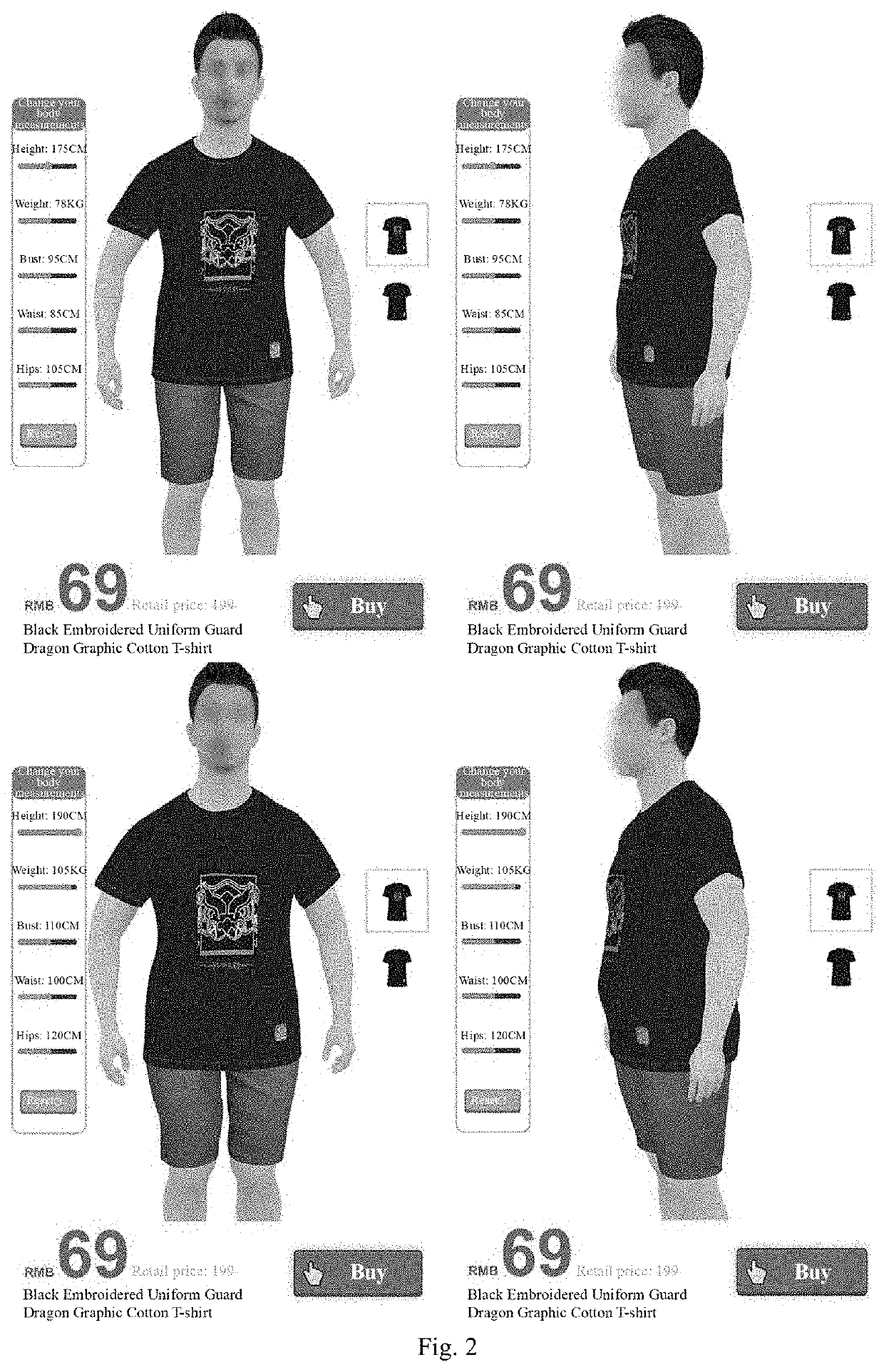Garment deformation method based on the human body's Laplacian deformation
a technology of laplacian deformation and garment, applied in the direction of image enhancement, instruments, image generation, etc., can solve the problems of poor sense of reality and layering, high requirements for garment mesh deformation, and model facial features and garment texture simulation, etc., to achieve high real-time, simple
- Summary
- Abstract
- Description
- Claims
- Application Information
AI Technical Summary
Benefits of technology
Problems solved by technology
Method used
Image
Examples
Embodiment Construction
[0052]Next, the technical solution in this invention will be further detailed in conjunction with figures and embodiments.
[0053](1) inputting polygonal mesh models of the human body and the garment;
[0054](2) discretizing non-homogeneous mesh models of the human body and the garment inputted in Step (1);
[0055](3) clustering all the discretized mesh vertices, to reduce the number of vertices and to form a set of homogeneous discrete vertices;
[0056](4) constructing Laplacian matrices of the human body and the garment;
[0057](5) preprocessing and solving inverse matrices;
[0058](6) editing by using the human body mesh as a control vertex, to drive a real-time smooth deformation of the garment mesh;
[0059](7) mapping a deformed and simplified mesh back to a mesh space of an original resolution to get deformed human body and garment mesh models.
[0060]In the said Step (1), the mesh of 3D human body and garment models inputted are generally non-homogeneously distributed in real life; some part...
PUM
 Login to View More
Login to View More Abstract
Description
Claims
Application Information
 Login to View More
Login to View More - R&D
- Intellectual Property
- Life Sciences
- Materials
- Tech Scout
- Unparalleled Data Quality
- Higher Quality Content
- 60% Fewer Hallucinations
Browse by: Latest US Patents, China's latest patents, Technical Efficacy Thesaurus, Application Domain, Technology Topic, Popular Technical Reports.
© 2025 PatSnap. All rights reserved.Legal|Privacy policy|Modern Slavery Act Transparency Statement|Sitemap|About US| Contact US: help@patsnap.com


